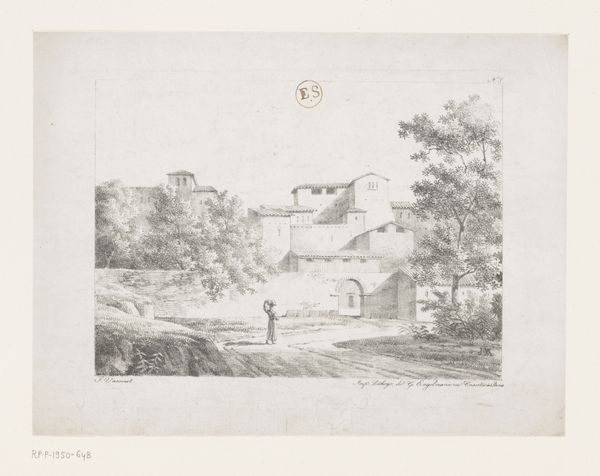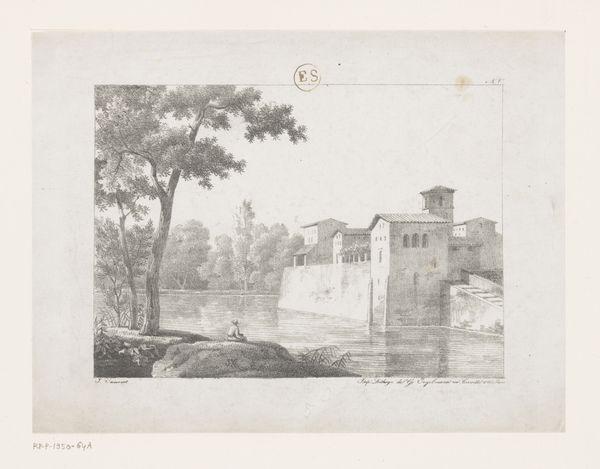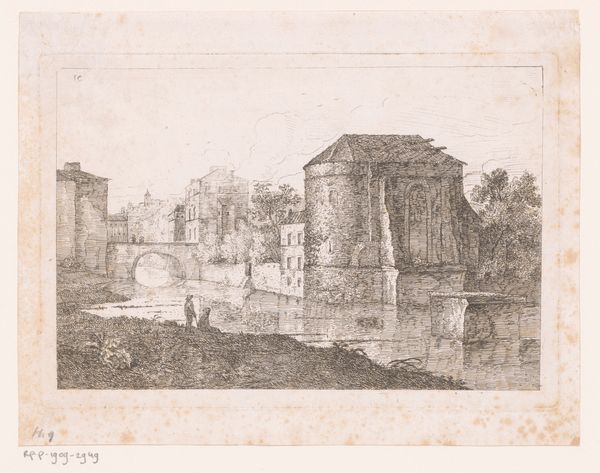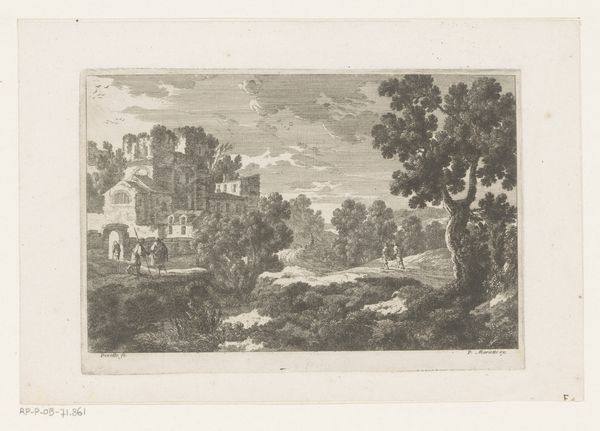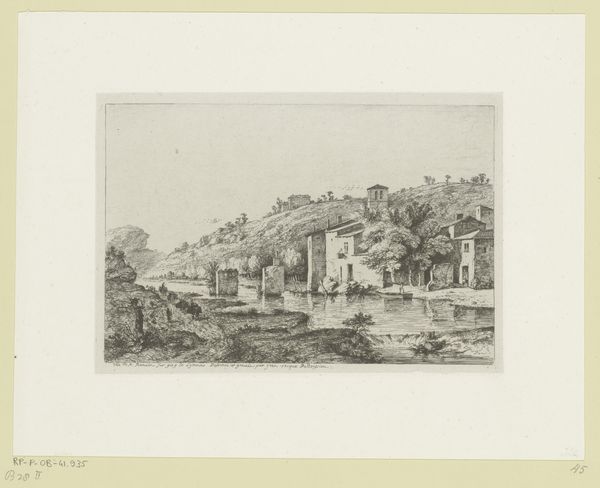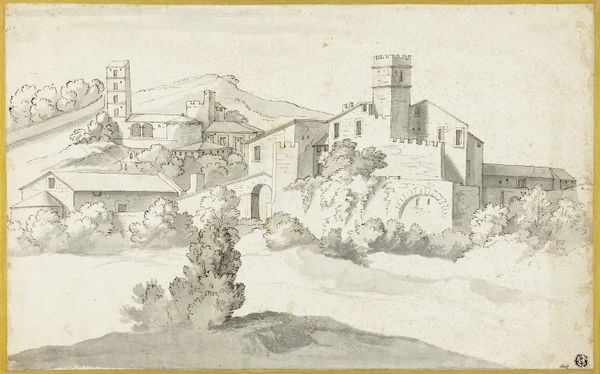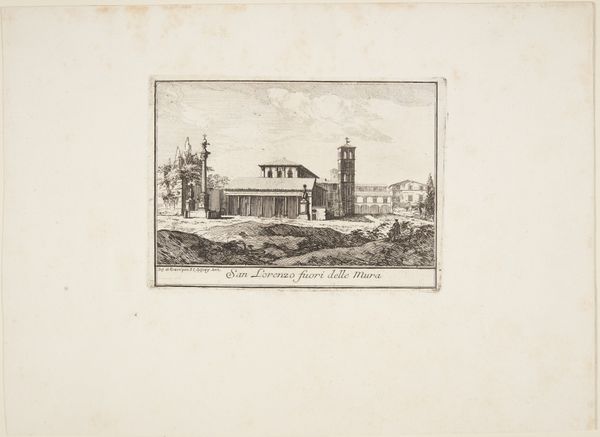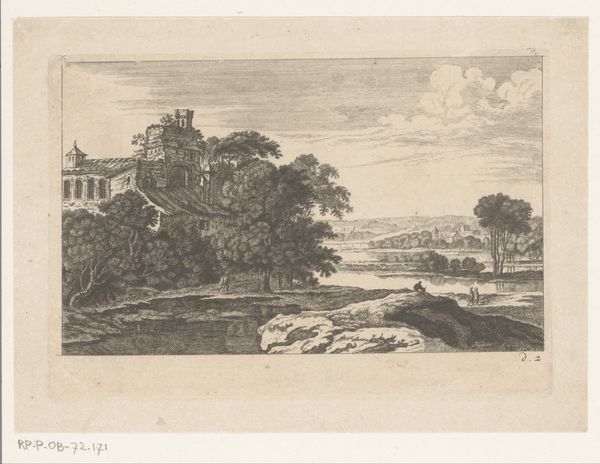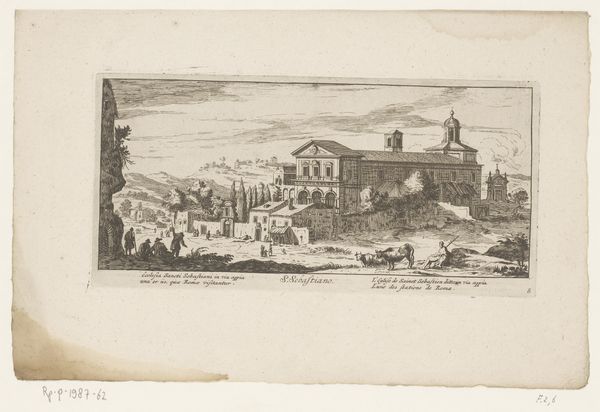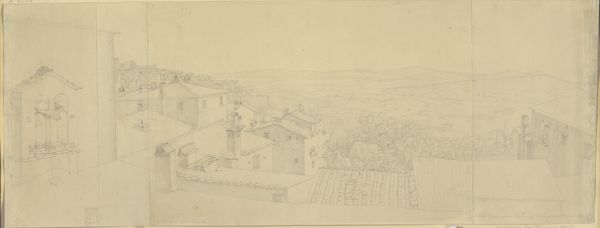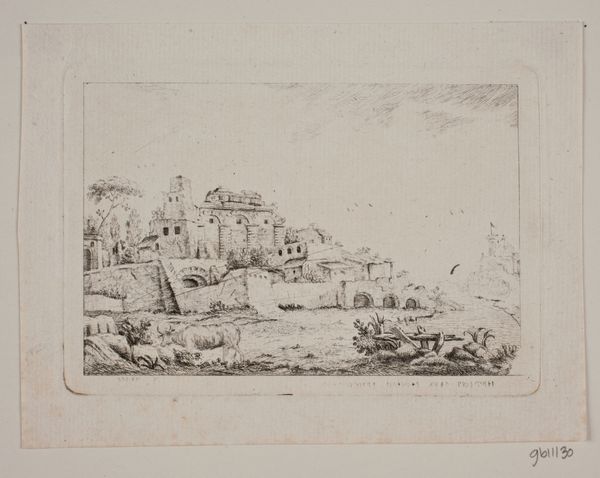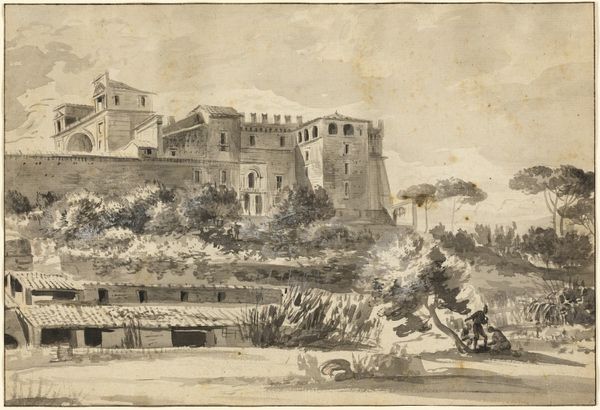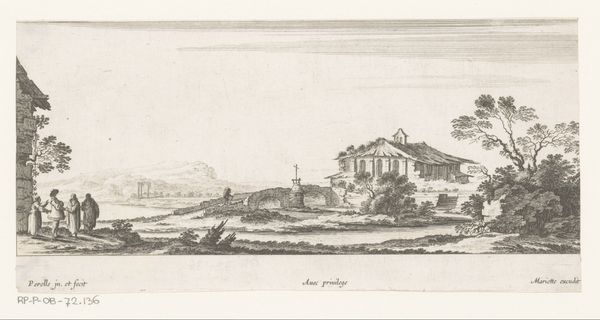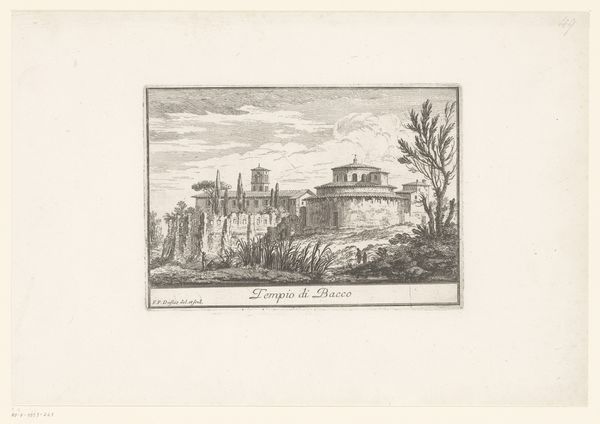
drawing, paper, ink
#
drawing
#
landscape
#
paper
#
ink
#
romanticism
#
cityscape
#
academic-art
Dimensions: height 219 mm, width 306 mm
Copyright: Rijks Museum: Open Domain
Editor: This drawing, "Two Figures Outside the Walls of an Italian City," from somewhere between 1816 and 1830 by Jean Vasserot, captures a muted Italian vista with ink on paper. There’s a gentle stillness in the scene; I find the city walls rather imposing, which is only broken by those walking outside it. What symbols and cultural meanings are present here, do you think? Curator: It's intriguing how Vasserot positions these figures *outside* the city walls. What do walls represent, psychologically, to you? Boundaries, safety, exclusion? The very act of depicting figures in relation to those walls suggests a complex relationship – a longing, perhaps, or a sense of being othered. The Italian cityscape itself, rendered in such a soft ink wash, carries centuries of artistic and cultural memory, from the Grand Tour to the birth of the Renaissance. Do you think the muted tones add to that historical weight? Editor: They really do give a sense of looking at something aged, as though from a lost world! Maybe these people can't enter the city? Or are they about to venture into it? The Romantic era does lean into this idea of human separation... Curator: Precisely. Think of Romanticism's fascination with the sublime – the overwhelming power of nature against human endeavor. Could this scene, with the figures dwarfed by both landscape and city architecture, suggest a similar exploration of humanity's place in the world? Or perhaps a yearning for simpler times before urban expansion and rigid societal structure, that might resonate for us even today? Editor: I never considered that Vasserot’s work could represent anxieties about urban growth! It does add a layer of depth to this seemingly simple drawing, one that shows we still contend with city life and human connection. Curator: Indeed! Art allows a glimpse into not just the physical likeness, but the psychological state of our cultures. The ability to see what was and apply it to what will be can be a transformative gift.
Comments
No comments
Be the first to comment and join the conversation on the ultimate creative platform.
